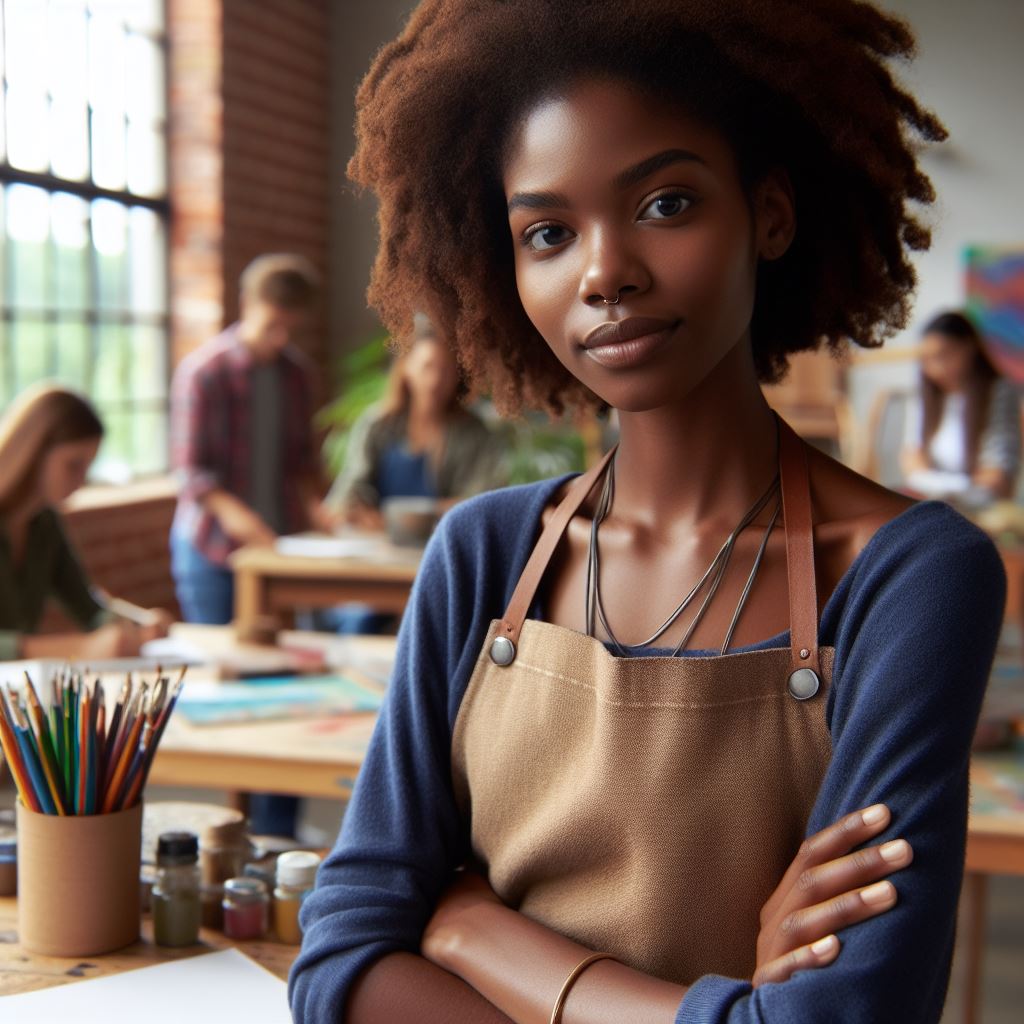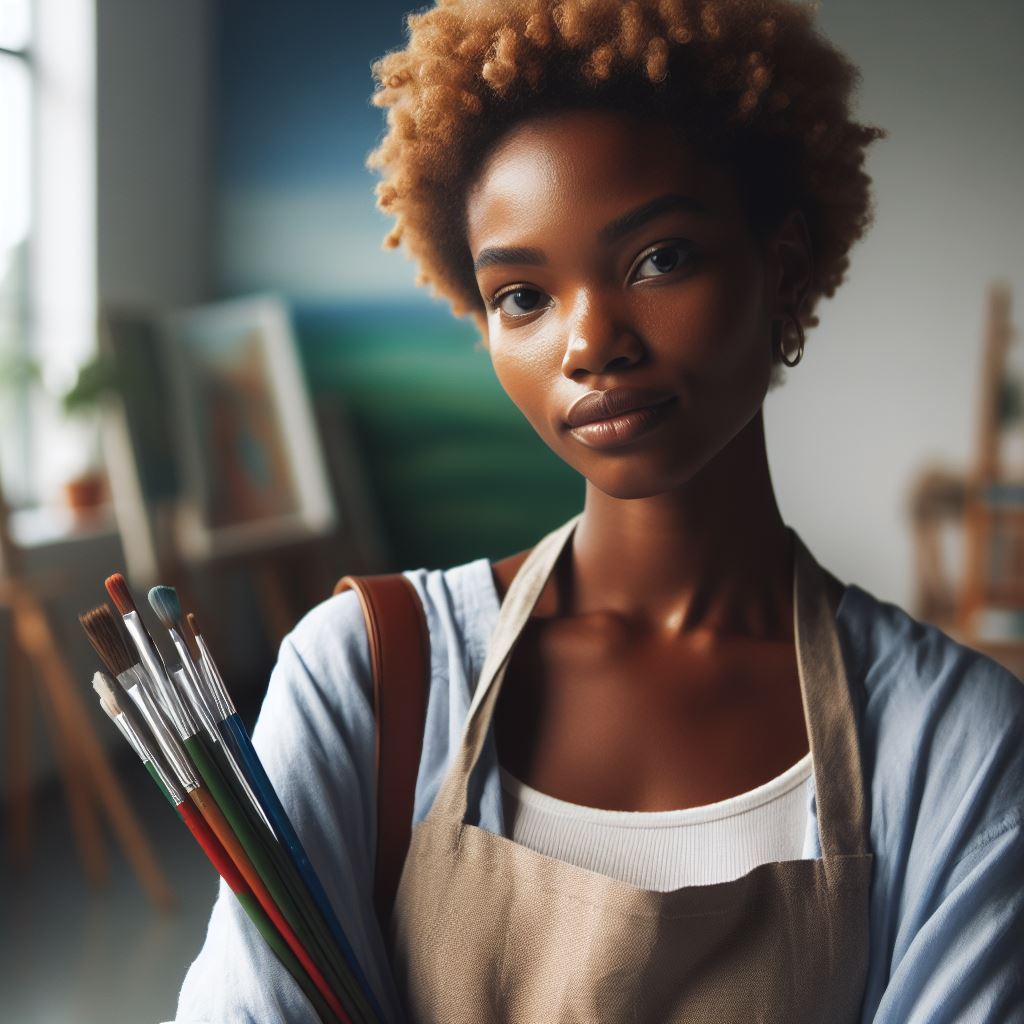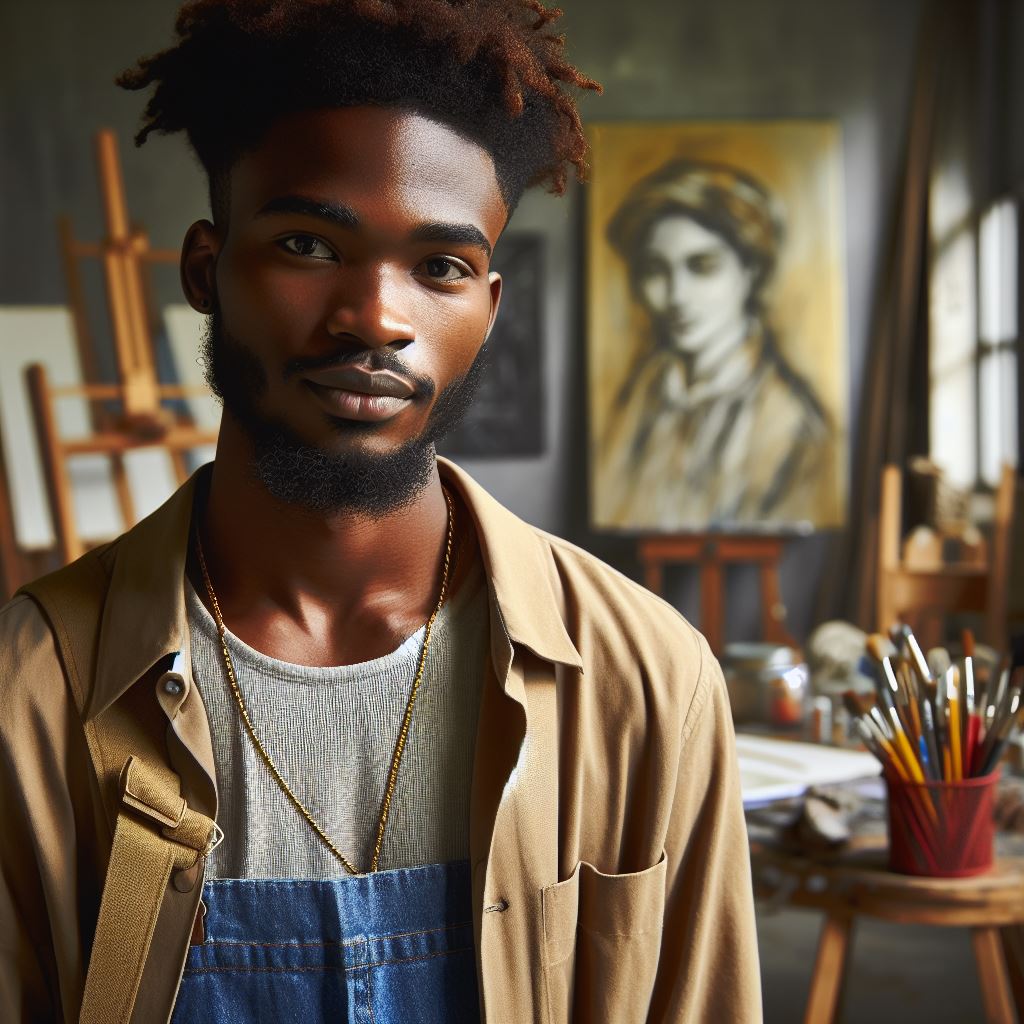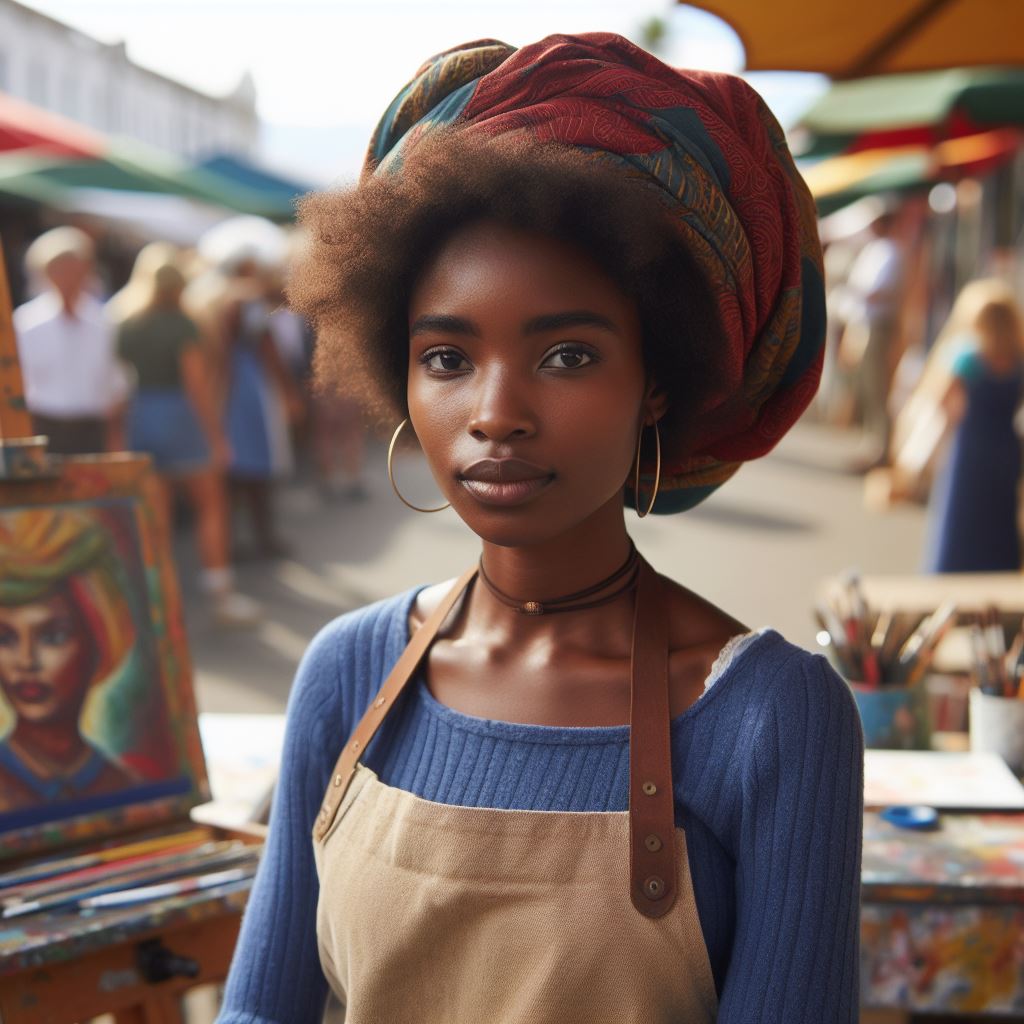Introduction
Art has long been a powerful tool in social movements worldwide. It captures emotions, unites people, and communicates complex messages effectively.
From murals in Latin America to protest songs in the United States, art has inspired change and provided a voice to the marginalized.
These artistic expressions transcend language and cultural barriers, making them universal symbols of resistance and hope.
In South Africa, anti-apartheid struggles were fueled by vibrant artworks. Similarly, Soviet dissidents used literature and music to challenge oppressive regimes.
Art not only raises awareness but also mobilizes action. Its visual and emotional impact often stirs the conscience more deeply than words alone.
Transitioning to Nigeria, we see a rich tapestry of artistic resistance.
Nigerian social movements have effectively utilized art to confront issues such as corruption, inequality, and human rights abuses.
In the 1970s and 1980s, Afrobeat legend Fela Kuti emerged as a potent voice against military dictatorship.
His music, laced with incisive political commentary, galvanized millions and remains influential today.
Contemporary Nigerian artists continue this legacy, addressing modern challenges.
During the End SARS protests, which called for the disbandment of a notorious police unit, art played a crucial role.
Protesters used paintings, murals, and performances to depict police brutality and express their demands for justice.
The role of art in Nigerian social movements
Social media amplified these artistic messages, spreading them globally and garnering international support.
Additionally, Nigerian filmmakers and photographers document the struggles and resilience of their communities.
Films like “October 1” by Kunle Afolayan explore historical injustices, fostering a deeper understanding of Nigeria’s past and present.
Such works not only inform but also inspire action, encouraging viewers to engage in social change.
Art in Nigerian social movements is more than expression; it’s a catalyst for transformation.
By engaging with the public’s conscience and promoting solidarity, Nigerian artists continue to shape the nation’s social and political landscape.
Their contributions underscore the enduring power of art in driving societal progress.
Historical perspective
The use of art in past Nigerian social movements
Art has played a significant role in past Nigerian social movements.
During the colonial era, art was used to resist and protest against British oppression.
Nigerian artists such as Ben Enwonwu and Aina Onabolu used their work to promote cultural pride and nationalism.
These artists depicted the struggles and aspirations of the Nigerian people through their art.
In the 1960s, during Nigeria’s struggle for independence, art became a powerful tool for advocacy.
Artists used paintings, sculptures, and music to raise awareness about social and political issues.
Fela Kuti, a famous Nigerian musician, used his music to criticize the government and spark social change.
The Oshogbo School of Art emerged during this period, promoting traditional Nigerian art forms as a form of resistance.
In the 1990s, during the pro-democracy movement, Nigerian artists continued to use their work to advocate for political change.
The likes of Bruce Onobrakpeya and Twins Seven-Seven created powerful images that captured the spirit of the movement.
Art served as a means of documenting and preserving the history of Nigeria’s social movements.
How art has been a tool for activism and resistance in Nigeria’s history
In modern-day Nigeria, art continues to be a driving force in social activism.
Social media has provided a platform for artists to reach a wider audience with their messages.
Artists like Laolu Senbanjo and Njideka Akunyili Crosby use their art to address issues such as gender equality and corruption.
Art exhibitions and festivals in Nigeria often feature works that challenge societal norms and provoke thought.
The Nollywood film industry also plays a role in shaping public opinion on social issues.
Nigerian filmmakers produce movies that address topics such as corruption, poverty, and injustice.
Art has become a tool for initiating conversations, raising awareness, and inspiring change in Nigerian society.
The proliferation of street art in cities like Lagos reflects the grassroots nature of social movements.
Murals and graffiti are used to express dissent and give voice to marginalized communities.
Artists collaborate with activists and community organizers to create visual campaigns that rally support for causes.
Transform Your Career with Expert Guidance
Get personalized mentorship consulting that’s tailored to your unique path. Our expert advice is actionable and exclusive.
Get StartedArt has long been intertwined with Nigerian social movements, serving as a catalyst for change.
From the early days of anti-colonial resistance to the modern era of digital activism, artists have been at the forefront of social change.
By creating thought-provoking and engaging work, Nigerian artists continue to push boundaries, challenge norms, and inspire action.
The role of art in Nigerian social movements cannot be understated, as it serves as a powerful and enduring form of expression.
Read: Tips for Building an Art Portfolio in Nigeria
Contemporary examples
Art has always been a powerful tool for social change in Nigeria, and in recent years, there have been several notable social movements where art played a significant role in bringing about change.
Recent social movements in Nigeria where art played a significant role
- #EndSARS Movement: One of the most prominent social movements in recent memory, the #EndSARS movement used art in the form of protest songs, graffiti, and visual art to raise awareness about police brutality and demand for police reform.
- Bring Back Our Girls Campaign: This campaign, which aimed to bring attention to the kidnapping of over 200 schoolgirls by Boko Haram in Chibok, used art installations, performances, and social media campaigns to mobilize support and advocate for the girls’ release.
- Climate Change Activism: Nigerian artists have been using their art to raise awareness about the impacts of climate change on the country and advocate for environmental conservation.
Through exhibitions, performances, and collaborations with environmental organizations, artists are highlighting the urgent need for action on climate change.
Modern Nigerian artists using their art for social change
- Chimamanda Ngozi Adichie: A renowned Nigerian writer and feminist, Adichie’s works explore themes of gender, identity, and social justice.
Through her novels, essays, and public speaking engagements, she has become a leading voice in the global feminist movement. - Victor Ehikhamenor: An acclaimed visual artist and writer, Ehikhamenor’s work often addresses political and social issues in Nigeria.
His art has been featured in exhibitions around the world and has sparked conversations about topics such as corruption, inequality, and cultural heritage. - Olamide Ogunade: A multimedia artist known for her thought-provoking installations and performances, Ogunade uses her art to challenge societal norms and advocate for marginalized communities.
Her work often explores themes of power, identity, and social justice.
These examples highlight the important role that art continues to play in Nigerian social movements, as artists use their creative talents to raise awareness, spark dialogue, and inspire change in society.
Read: Understanding Nigerian Traditional Art Forms
Cultural impact
How Art Reflects Nigerian culture and Identity in social movements
Art plays a crucial role in reflecting Nigerian culture and identity in social movements, serving as a powerful tool for self-expression and communication.
These movements often utilize art forms that are deeply rooted in Nigerian traditions, creating a sense of connection to the country’s history and heritage.
How traditional Nigerian art forms are incorporated into modern social movements
- Traditional Nigerian Art Forms: Traditional Nigerian art forms such as beadwork, pottery, and textile design are often incorporated into modern social movements to convey messages of resilience, unity, and resistance.
These art forms provide a visual representation of the rich cultural tapestry of Nigeria, highlighting the diversity and creativity of its people. - Symbolism and Imagery: Nigerian artists frequently use symbolism and imagery in their work to evoke emotions and convey messages that resonate with the local community.
By drawing on traditional motifs and patterns, artists can create a sense of cultural pride and solidarity among movement participants. - Musical Expression: Music is another important aspect of Nigerian culture that plays a significant role in social movements.
Nigerian musicians often use their lyrics to address social and political issues, using their platform to raise awareness and inspire action.
Through music, artists can reach a wider audience and mobilize support for various causes.
Overall, the incorporation of traditional Nigerian art forms into modern social movements helps to preserve and promote the country’s cultural heritage while also fostering a sense of community and belonging among participants.
By embracing their roots and drawing inspiration from the past, Nigerian artists contribute to the ongoing struggle for social change and justice in their society.
Read: Digital Art Trends in the Nigerian Art Scene
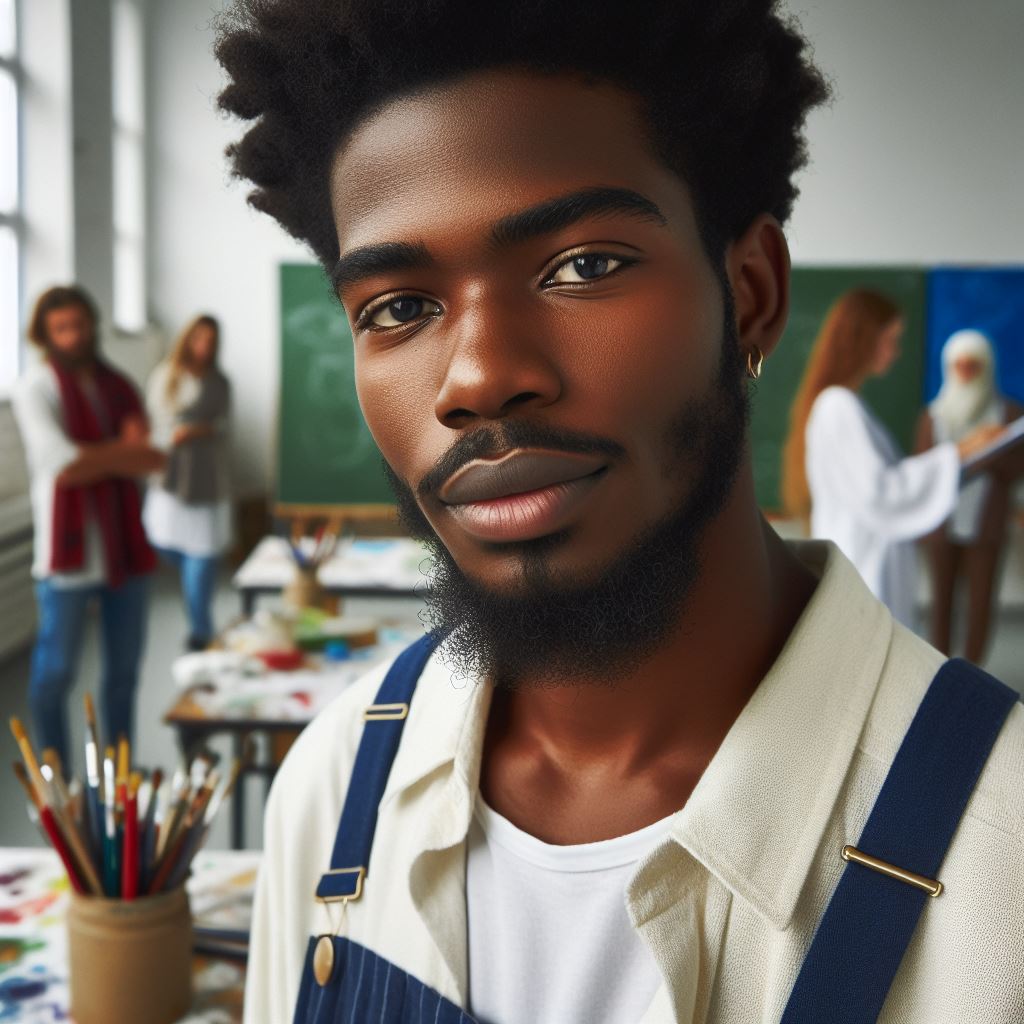
Amplifying marginalized voices
Art plays a crucial role in providing a platform for marginalized groups in Nigerian society.
Through various forms of artistic expression, individuals who are often unheard or sidelined can use art as a powerful tool to amplify their voices and bring attention to their struggles.
Art as a form of activism
Artistic expressions such as paintings, music, poetry, and street performances serve as a medium for marginalized groups to convey their messages, raise awareness, and advocate for social change.
By showcasing their experiences and perspectives through art, marginalized voices are able to reach a broader audience and create a deeper impact within society.
Empowering women through art
Art has been instrumental in elevating the voices of women in Nigerian social movements.
Female artists use their work to address issues such as gender inequality, domestic violence, and women’s rights.
Through art, women are able to challenge stereotypes, demand equality, and assert their presence in public spaces, thus contributing to the feminist discourse in Nigeria.
Engaging youth through artistic expression
Youth in Nigeria often face social and economic challenges, but art provides them with a platform to express their concerns, aspirations, and vision for a better future.
Artistic activities such as music, dance, and graffiti allow young people to engage with social issues, mobilize for change, and promote dialogue within their communities.
Advocacy for minority groups
Art serves as a powerful tool for advocating for the rights and representation of minority groups in Nigerian society.
Artists from marginalized communities use their creativity to address discrimination, oppression, and marginalization.
Through art exhibitions, performances, and public installations, minority groups are able to share their stories, celebrate their cultural heritage, and challenge the status quo, ultimately fostering a more inclusive and diverse social movement.
In short, art not only serves as a form of creative expression but also as a means to empower marginalized voices, amplify their narratives, and drive social change in Nigerian society.
By providing a platform for women, youth, and minority groups, art plays a vital role in shaping the discourse of social movements and advocating for a more inclusive and equitable society.
Read: Funding Opportunities for Nigerian Visual Artists
Building community solidarity
Art plays a significant role in bringing people together in Nigerian social movements.
Here are some ways art fosters unity and solidarity among diverse communities:
Art as a form of expression
Art allows individuals to express their thoughts, emotions, and experiences in a creative and meaningful way.
This expression creates a sense of solidarity among members of the community who resonate with the message behind the artwork.
Art as a tool for storytelling
Art has the power to tell stories that reflect the struggles, triumphs, and aspirations of a community.
By sharing these stories through various art forms such as paintings, sculptures, music, and dance, people can connect with each other on a deeper level, building empathy and understanding.
Art as a platform for dialogue
Art exhibitions, performances, and installations create spaces for open dialogue and conversations about important social issues.
These platforms encourage community members to engage in meaningful discussions, share experiences, and work together towards common goals.
Art as a means of cultural preservation
Art serves as a way to preserve and celebrate the rich cultural heritage of Nigeria.
Through traditional art forms like beadwork, pottery, and weaving, communities can honor their roots, instill a sense of pride, and strengthen their bond with one another.
Art as a tool for activism
Art has been used as a powerful tool for advocating social change and raising awareness about pressing issues.
By creating thought-provoking artworks that challenge the status quo, artists inspire communities to come together, mobilize, and take action for positive change.
In general, art plays a vital role in building community solidarity by providing a platform for expression, storytelling, dialogue, cultural preservation, and activism.
Through artistic collaborations and engagements, diverse communities in Nigeria can come together, foster unity, and work towards a more inclusive and equitable society.
Influencing policy and change
Artists in Nigeria have used their creative expressions to shed light on pressing social issues, pushing for change at both the grassroots and policy levels.
Their work serves as a powerful tool for advocacy and activism, reaching a wider audience and stimulating conversations that can lead to concrete actions.
Impact on Policy Decisions
Artistic expressions, whether through music, visual arts, or literature, have the power to evoke emotions and provoke thoughts that influence policymakers.
Activists’ artistic interventions gained global attention for “Bring Back Our Girls” campaign, pressuring government action.
Driving Societal Change
Art actively drives societal change in Nigeria, raising awareness and mobilizing communities against corruption, gender inequality, and human rights violations.
Artists have used their platforms to amplify the voices of marginalized groups and challenge the status quo, sparking conversations that push for systemic reforms.
Examples of Artistic Impact
- Visual artists like Nike Davies-Okundaye have used their paintings and sculptures to depict the resilience and strength of Nigerian women, inspiring empowerment movements.
- Musician Fela Kuti’s Afrobeat music served as a powerful tool for political activism, critiquing corrupt government practices and calling for social justice.
- Literary works by writers like Chimamanda Ngozi Adichie have highlighted complex social issues, sparking dialogue and calls for change both locally and globally.
These examples demonstrate how art in Nigeria has not only raised awareness but also inspired action, leading to tangible outcomes in social movements.
Artists shape public perceptions by engaging audiences emotionally and intellectually.
They influence policy decisions significantly. Their work drives meaningful societal change.
Conclusion
Art has been a powerful tool in Nigerian social movements, providing a platform for activism and resistance.
Artists have used their creativity to raise awareness about societal issues and spark conversations for change.
Through various forms of art such as music, literature, and visual arts, they have been able to mobilize the masses.
Art has played a significant role in amplifying the voices of marginalized communities and challenging the status quo.
It has served as a catalyst for social change and has been instrumental in shaping the cultural and political landscape of Nigeria.
Overall, the importance of art as a tool for activism, resistance, and social change in Nigeria cannot be understated.
It has the power to inspire, educate, and unite people towards a common goal of creating a more just and equitable society.

